*NURSING > EXAM > ACLS Certification Exam (99)- Questions And Answers Correctly Answered A+ Score (All)
ACLS Certification Exam (99)- Questions And Answers Correctly Answered A+ Score
Document Content and Description Below
ACLS Certification Exam (99)- Questions And Answers Correctly Answered A+ Score ACLS Certification Exam (99)- Questions And Answers Correctly Answered A+ Score Any organized rhythm without a pulse is ... defined as pulseless electrical activity (PEA). Correct ans - True Synchronized cardioversion is appropriate for treating an unknown wide complex tachycardia. Correct ans - True The aorta is the wall that separates the ventricles of the heart. Correct ans - False The most effective treatment for ventricular fibrillation is defibrillation. Correct ans - True An individual should be cleared-Ñ prior to a shock only when convenient. Correct ans - False PEA and asystole are considered non-shockable rhythms and follow the same ACLS algorithm. Correct ans - True Transcutaneous pacing should be used on an individual with bradycardia and inadequate perfusion if atropine is ineffective and the individual is exhibiting severe symptoms. Correct ans - True Low blood pressure may be an indication of hemodynamic instability. Correct ans - True Urgent defibrillation is essential for survival in the management of acute strokes. Correct ans - False Fibrinolytic therapy within three hours (in some cases 4.5 hours) of first onset of symptoms is the standard when treating ischemic stroke. Correct ans - True 100% oxygen is acceptable for early intervention but not for extended periods of time. Correct ans - True In a suspected acute stroke individual, you must always immediately obtain IV access. Correct ans - False There is never a pulse associated with VF; therefore, you should follow the PEA algorithm with individuals in VF. Correct ans - False If the AED advises no shock, you should still defibrillate because defibrillation often restarts the heart with no pulse. Correct ans - False If transcutaneous pacing fails, there are no other options to consider. Correct ans - False Medication is the only treatment for an unstable tachycardic individual. Correct ans - False For an individiual in respiratory arrest with a pulse, how often should they be ventilated? A) Give two breaths every 8 to 9 seconds, or 13 to 15 breaths per minute. B) Give one breath every 5 to 6 seconds, or 10 to 12 breaths per minute. C) Give one breath every 3 to 4 seconds, or 15 to 20 breaths per minute. D) Give one breath every 8 to 9 seconds, or 6 to 8 breaths per minute. Correct ans - B) Give one breath every 5 to 6 seconds, or 10 to 12 breaths per minute. Which item is NOT a basic airway skill? A) Placement of endotracheal tube (ET tube) B) Bag-mask ventilation C) Jaw-thrust maneuver without head extension D) Head-tilt-chin-lift maneuver Correct ans - A) Placement of endotracheal tube (ET tube) Which of the following basic airway adjuncts can be used in a conscious or semiconscious indivudual (with an intact cough and gag reflex)? A)Oropharyngeal airway (OPA) B) Endotracheal tube (ET tube) C) Nasopharyngeal airway (NPA) D) Esophageal-tracheal tube (combitube) Correct ans - C) Nasopharyngeal airway (NPA) Blood or secretions in the mouth or upper respiratory tract may threaten the airway. How can they be removed? A) Bag-mask ventllation B) Laryngeal tube C) None of the above D) Suctioning Correct ans - D) Suctioning What item is NOT an example of Advanced Airways? A) Esophageal-tracheal tube (combitube) B) Oropharyngeal airway (OPA) C) Endotracheal tube (ET tube) D) Laryngeal mask airway (LMA) Correct ans - B) Oropharyngeal airway (OPA) The compression-to-ventilation ratio during CPR prior to placement of an advanced airway is: A) 15:02 B) 20:01 C) 30:01:00 D) 30:02:00 Correct ans - D) 30:02:00 True statements about AED use in special situations include all of the following EXCEPT: A) Do not use an AED in water. B) Leave medication patches in place and place the AED electrode pads directly over the patch. C) Do not place the AED electrode pads directly over an implanted defibrillator or pacemaker. D) Extra care in placing electrode pads may be needed in individuals with a hairy chest. Correct ans - B) Leave medication patches in place and place the AED electrode pads directly over the patch. Antiarrhythmic drugs to consider for persistent VF/pulseless VT include all of the following EXCEPT: A) Lidocaine B) Amiodarone C) Atropine D) Magnesium Correct ans - INCORRECT: Lidocaine, Magnesium Bradycardia is defined as any rhythm disorder with a heart rate less than: A) 50 beats per minute B) 60 beats per minute C) 70 beats per minute D) 40 beats per minute Correct ans - B) 60 beats per minute Symptoms of bradycardia may include: A) Chest pain B) Shortness of breath C) Dizziness D) All of the above Correct ans - D) All of the above In the absence of immediately reversible causes, what is the first-line drug given for symptomatic bradycardia? A) Atropine B) Metoprolol C) Nitroglycerine D) Albuterol Correct ans - A) Atropine What is the first step in the treatment of persistent tachycardia (heart rate > 150 bpm) causing hypotension, altered mental status, and signs of shock? A) Defibrillation B) Obtain a 12-lead ECG C) Synchronized cardioversion D) Administer a calcium channel blocker Correct ans - INCORRECT: B) Obtain a 12-lead ECG D) Administer a calcium channel blocker CORRECT: If uncertain whether or not an individual is an appropriate candidate for synchronized cardioversion, the ACLS trained provider should: A) Seek expert consultation. B) Provide increased oxygenation. C) Obtain a coronary CT scan. D) Defer cardioversion until symptoms become irreversible. Correct ans - Seek expert consultation Which of the following is true concerning ischemic strokes? A) They account for 50% of all strokes and are caused by an occlusion of a vein to a region of the brain. B) They account for 87% of all strokes and are usually caused by an occlusion of an artery to a region of the brain. C) They account for 80% of all strokes and are caused by an occlusion of a vein to a region of the brain. D) They account for 13% of all strokes and are caused by an occlusion of an artery to a region of the brain. Correct ans - B) They account for 87% of all strokes and are usually caused by an occlusion of an artery to a region of the brain. All of the following are found within the 8 D's of Stroke Care EXCEPT: A) Delivery B) Detection C) Decision D) Debilitation Correct ans - D) Debilitation Where is the start of the mechanical movement of the heart generally thought to begin? A) Left atrium B) Right atrium C) Left ventricle D) Right ventricle Correct ans - B) Right atrium You are alone when you encounter an individual in what appears to be cardiac or respiratory arrest. What are the first three steps you should take to stabilize them? Check for danger, check for response, and ____________. A) Insert an advanced airway. B) Administer an initial shock. C) Send for help. D) Start CPR. Correct ans - INCORRECT: D) Start CPR. CORRECT: You are alone when you encounter an individual in cardiac arrest. They are not breathing, have no pulse, and have no suspected cervical spine trauma. Which maneuver should you use to open the airway? A) Jaw-thrust maneuver B) Blind finger-sweeps C) Head-tilt only D) Head-tilt-chin-lift maneuver Correct ans - D) Head-tilt-chin-lift maneuver According to the 2015 ILCOR update, high-quality CPR is defined as: A) 100 chest compressions per minute at a depth of at least one inch B) 100-120 chest compressions per minute at a depth of at least two inches, but not greater than 2.4 inches C) 80 chest compressions per minute at a depth of at least two inches D) 80 chest compressions per minute at a depth of at least one inch Correct ans - 100-120 chest compressions per minute at a depth of at least two inches, but not greater than 2.4 inches This is an example of which type of heart rhythm? A) Atrial fibrillation B) Pulseless electrical activity C) Ventricular fibrillation D) Atrial flutter Correct ans - C) Ventricular fibrillation During the post-cardiac arrest phase, which of the following medications can be used to treat hypotension? A) Dopamine B) Epinephrine C) Norepinephrine D) All of the above Correct ans - D) All of the above Treatment of PEA should include the following EXCEPT: A) Identify and reverse etiologies of the arrest B) Epinephrine C) Effective CPR D) Defibrillation Correct ans - INCORRECT: B) Epinephrine CORRECT: Thirty ____________ and two ____________ equal one cycle of CPR. A) Chest compressions, ventilations B) Ventilations, compressions C) Chest compressions, pulse checks D) Chest compressions, jaw lifts Correct ans - A) Chest compressions, ventilations According to the 2015 ILCOR Guidelines, stopping chest compressions for any reason, such as pulse checks, should be limited to less than: A) 30 seconds B) 60 seconds C) 10 seconds D) 3 seconds Correct ans - C) 10 seconds The following drugs and/or interventions may be used in the ACS individual for cardiac reperfusion: A. Fibrinolytic therapy B. Atropine C. Percutaneous coronary intervention (PCI) D. Both A and C Correct ans - D. Both A and C If an individual suffering from tachycardia loses their pulse, the following should be done: A) Administer atropine B) Immediate defibrillation C) CPR until pulse is detectable D) Immediately resume CPR and switch to ACLS cardiac arrest algorithm Correct ans - D) Immediately resume CPR and switch to ACLS cardiac arrest algorithm Cardioversion should not be delayed if: A. The individual suddenly deteriorates B. Tachycardia is causing the instability C. The individual becomes pulseless D. Both A and B Correct ans - D. Both A and B Where does sinus tachycardia originate? A) Atrioventricular node B) Sinoatrial node C) Purkinje system D) Septum wall Correct ans - B) Sinoatrial node During a tachycardic episode, if the individual ____________ at any point, you must switch algorithms. A) Salivates B) C) Urinates Vomits D) Loses a pulse Correct ans - D) Loses a pulse All of the following are appropriate actions by first responders EXCEPT: A) Transport to a nearby stroke center. B) Administer oxygen. C) Check glucose level. D) Find IV access immediately. Correct ans - D) Find IV access immediately. Why should therapeutic hypothermia be considered in an adult comatose person during the post-cardiac arrest period? A) To protect the brain/organs B) To re-establish circulation C) To prevent sepsis D) To prevent tachycardia Correct ans - A) To protect the brain/organs All of the [Show More]
Last updated: 9 months ago
Preview 4 out of 12 pages

Loading document previews ...
Buy this document to get the full access instantly
Instant Download Access after purchase
Buy NowInstant download
We Accept:

Reviews( 0 )
$12.50
Can't find what you want? Try our AI powered Search
Document information
Connected school, study & course
About the document
Uploaded On
Oct 19, 2024
Number of pages
12
Written in
Additional information
This document has been written for:
Uploaded
Oct 19, 2024
Downloads
0
Views
18

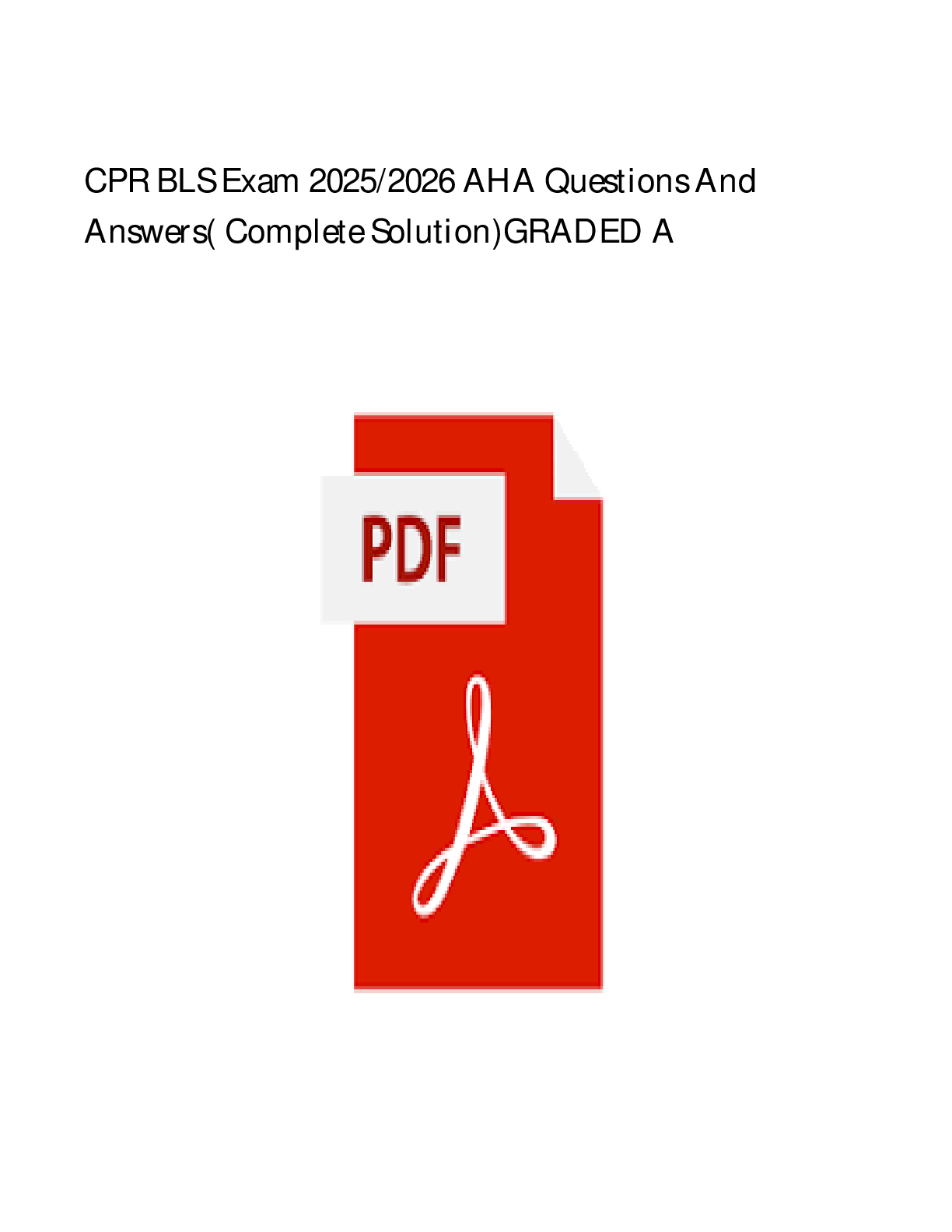
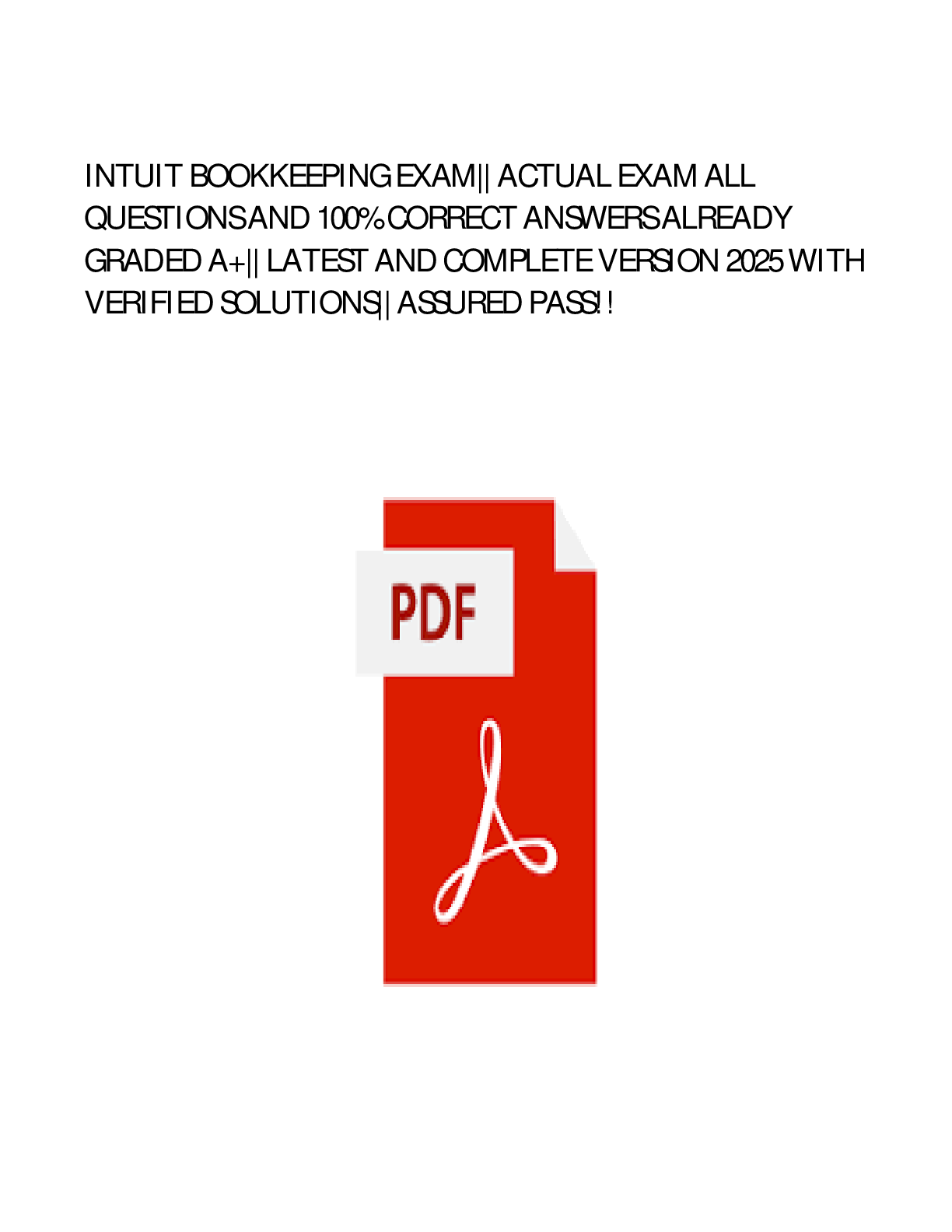
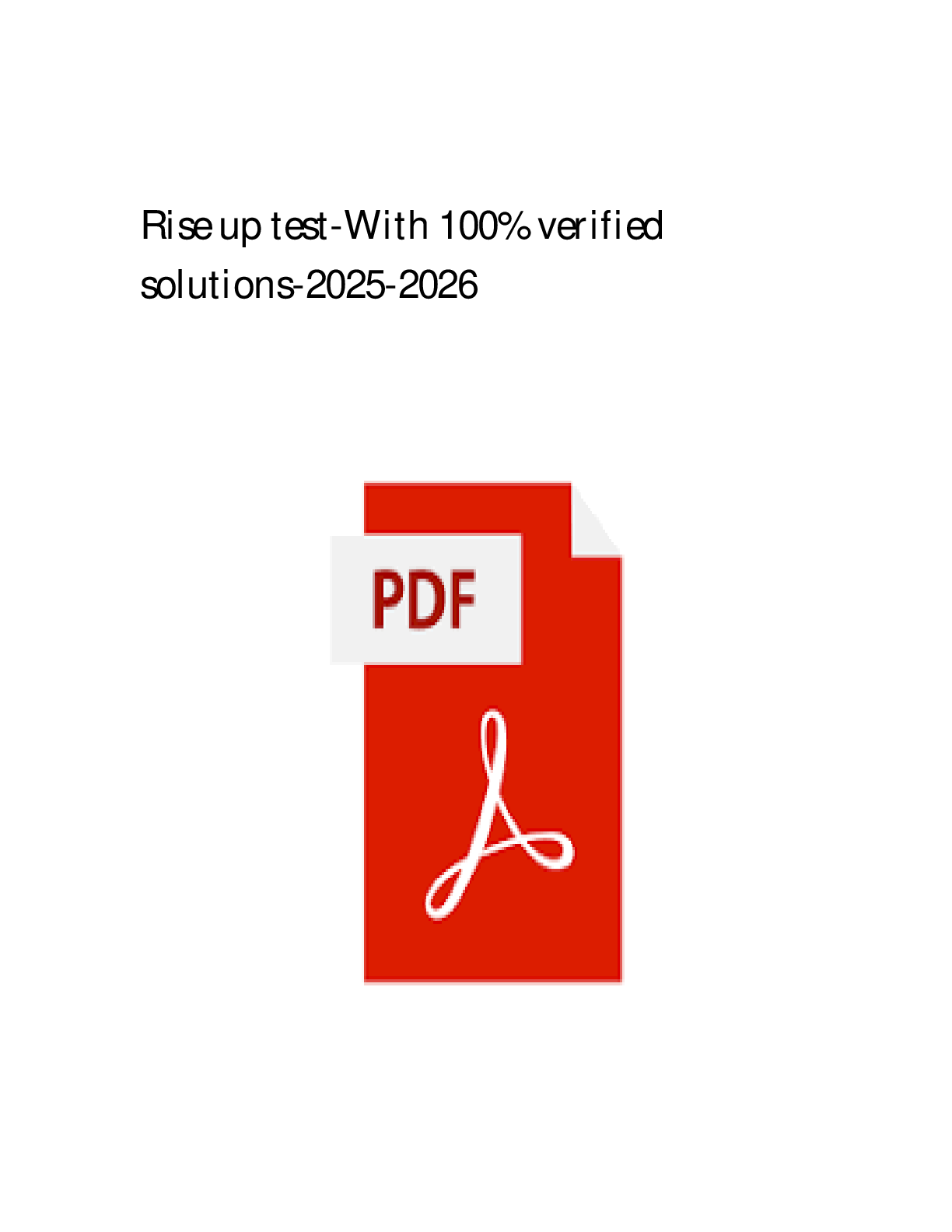
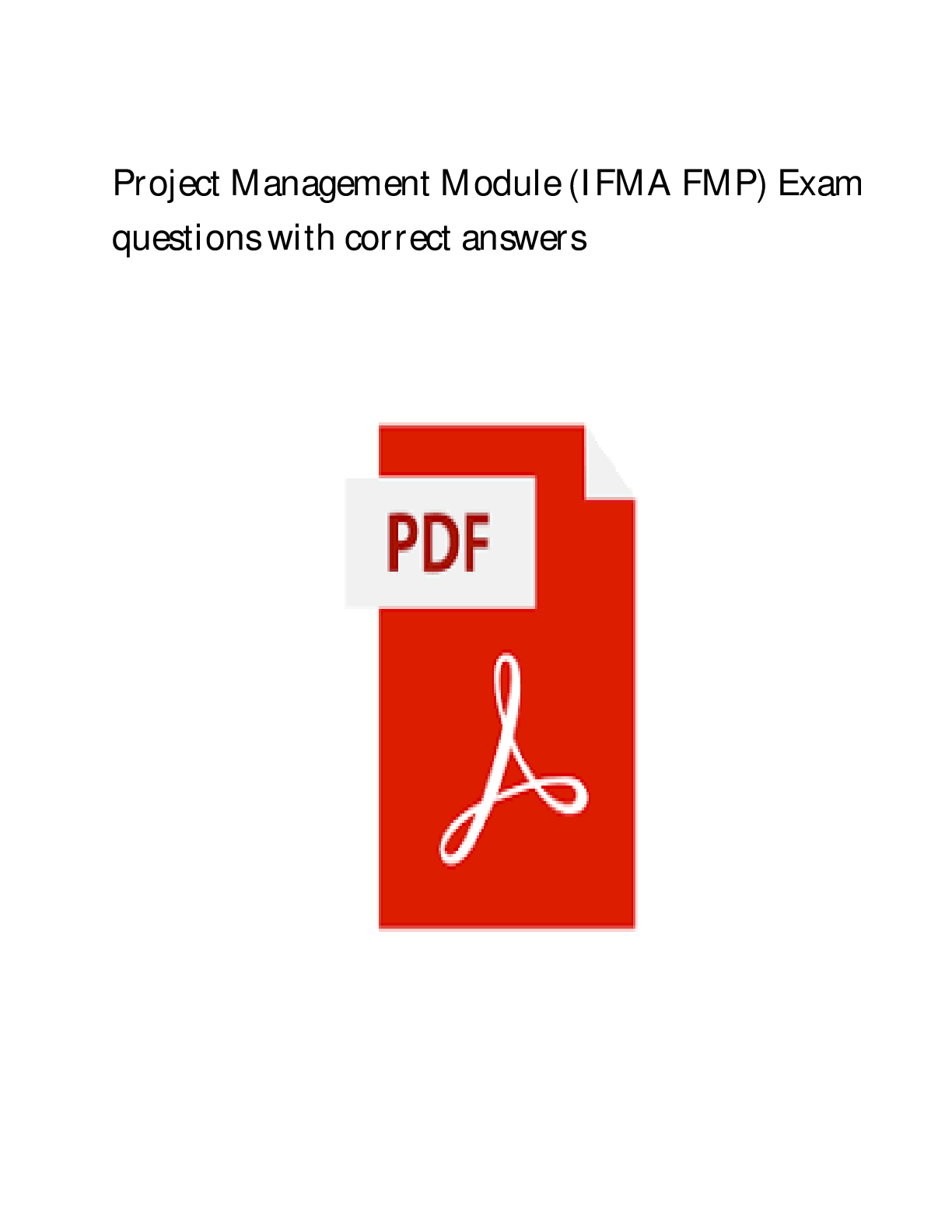
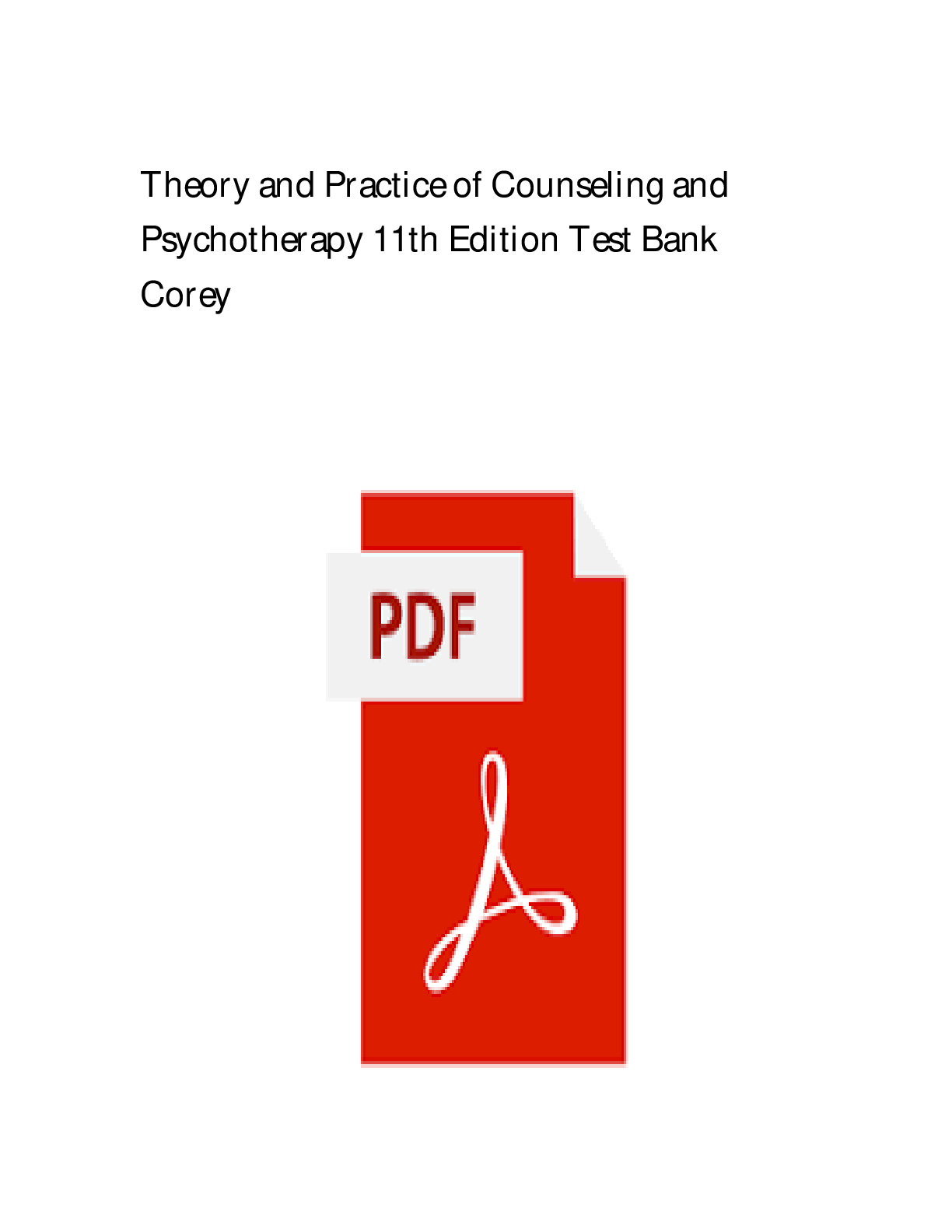
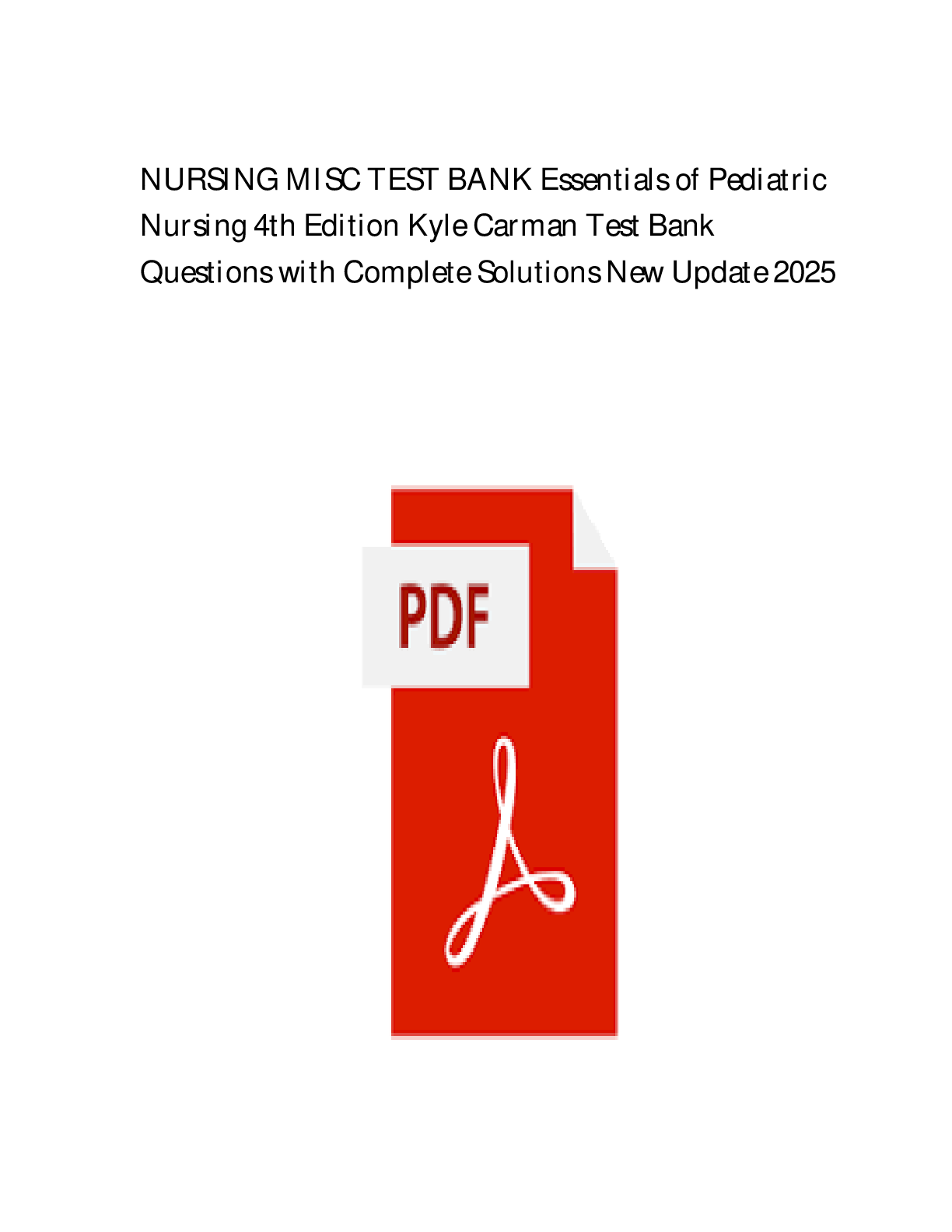
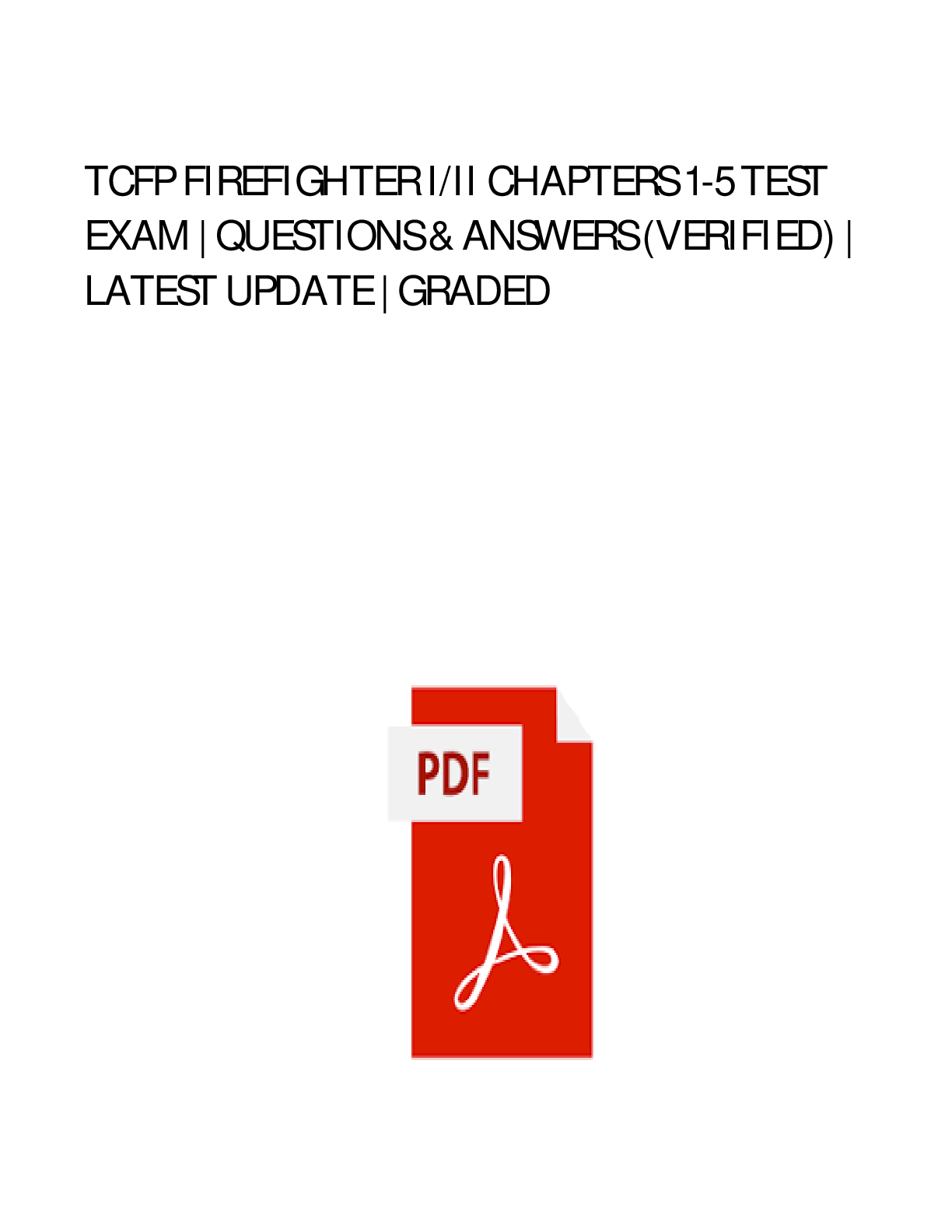
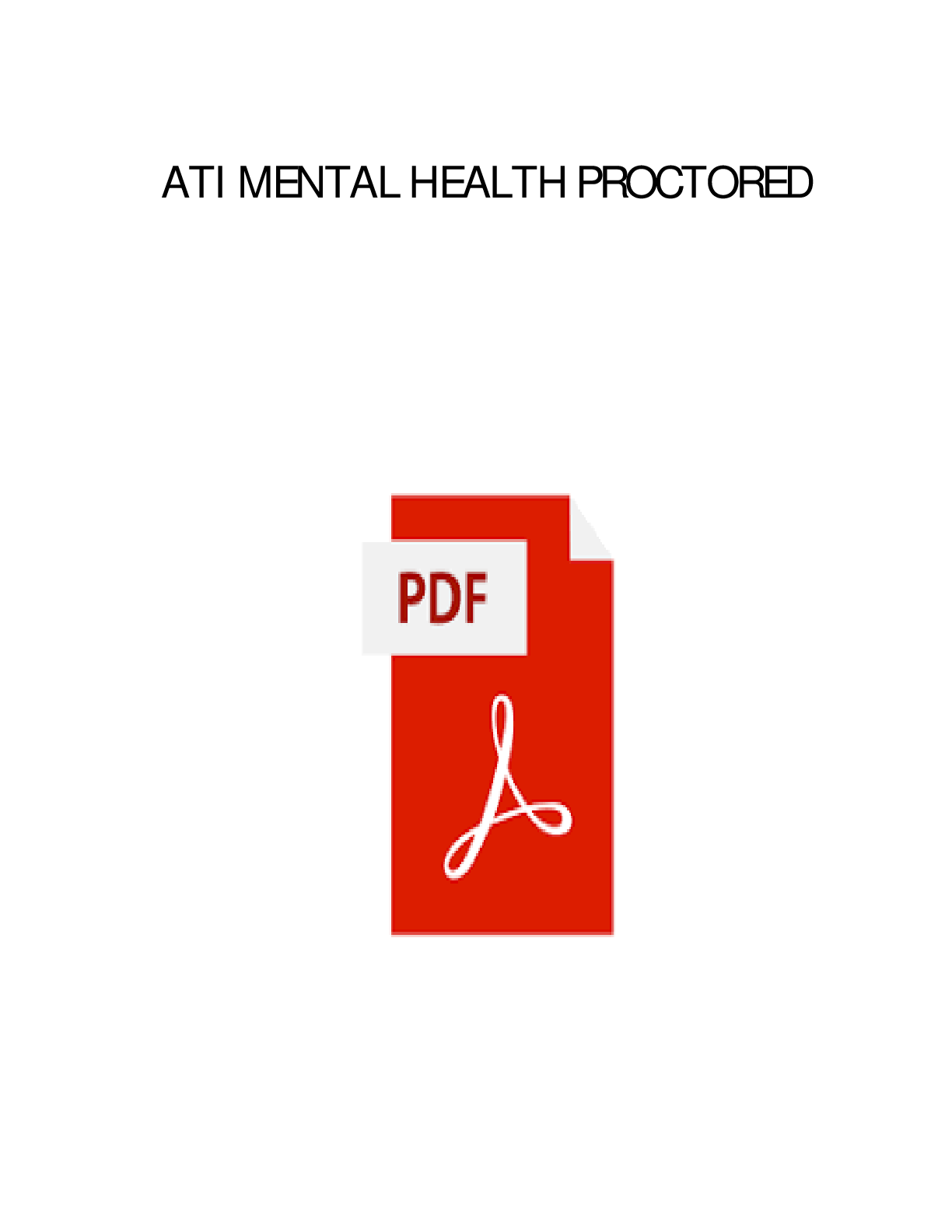
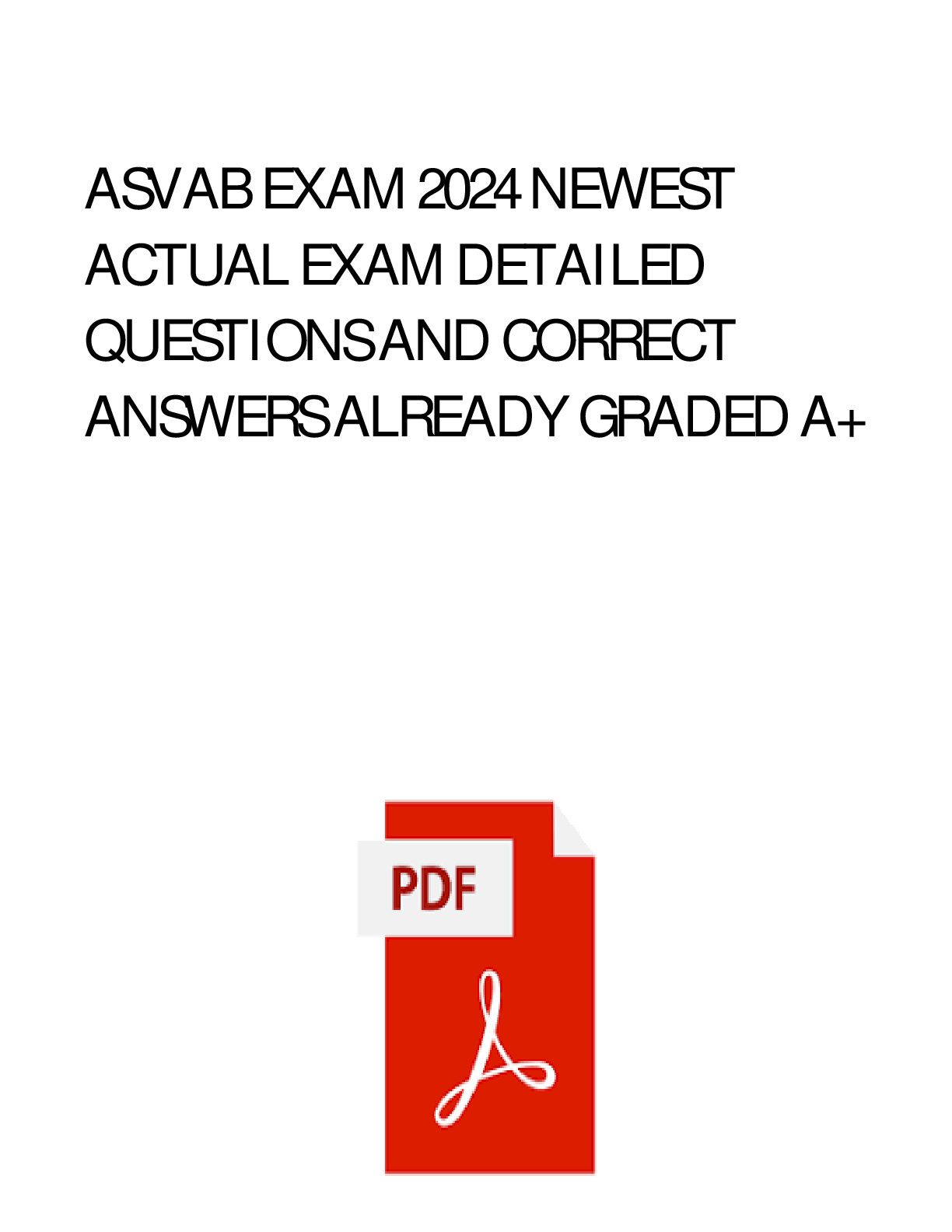
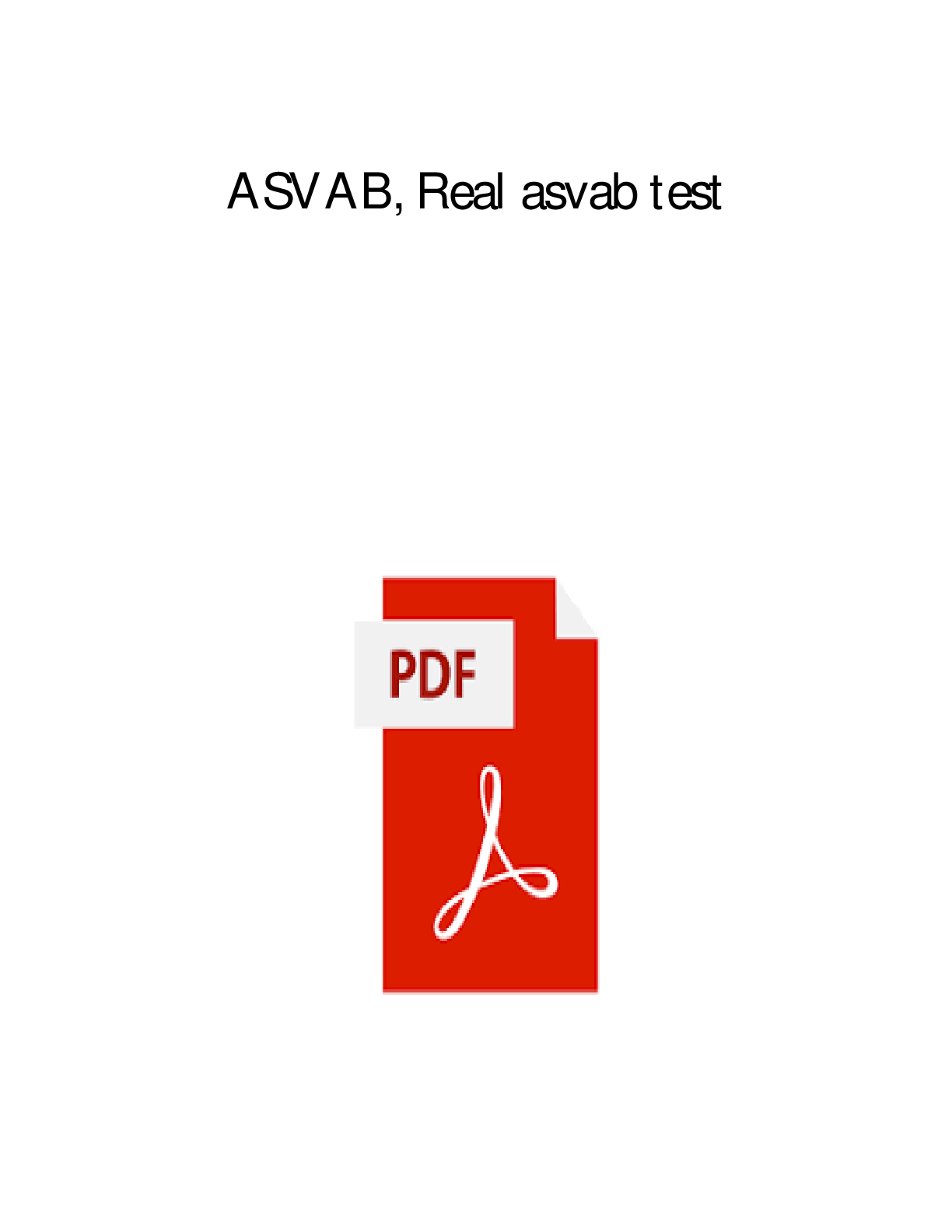
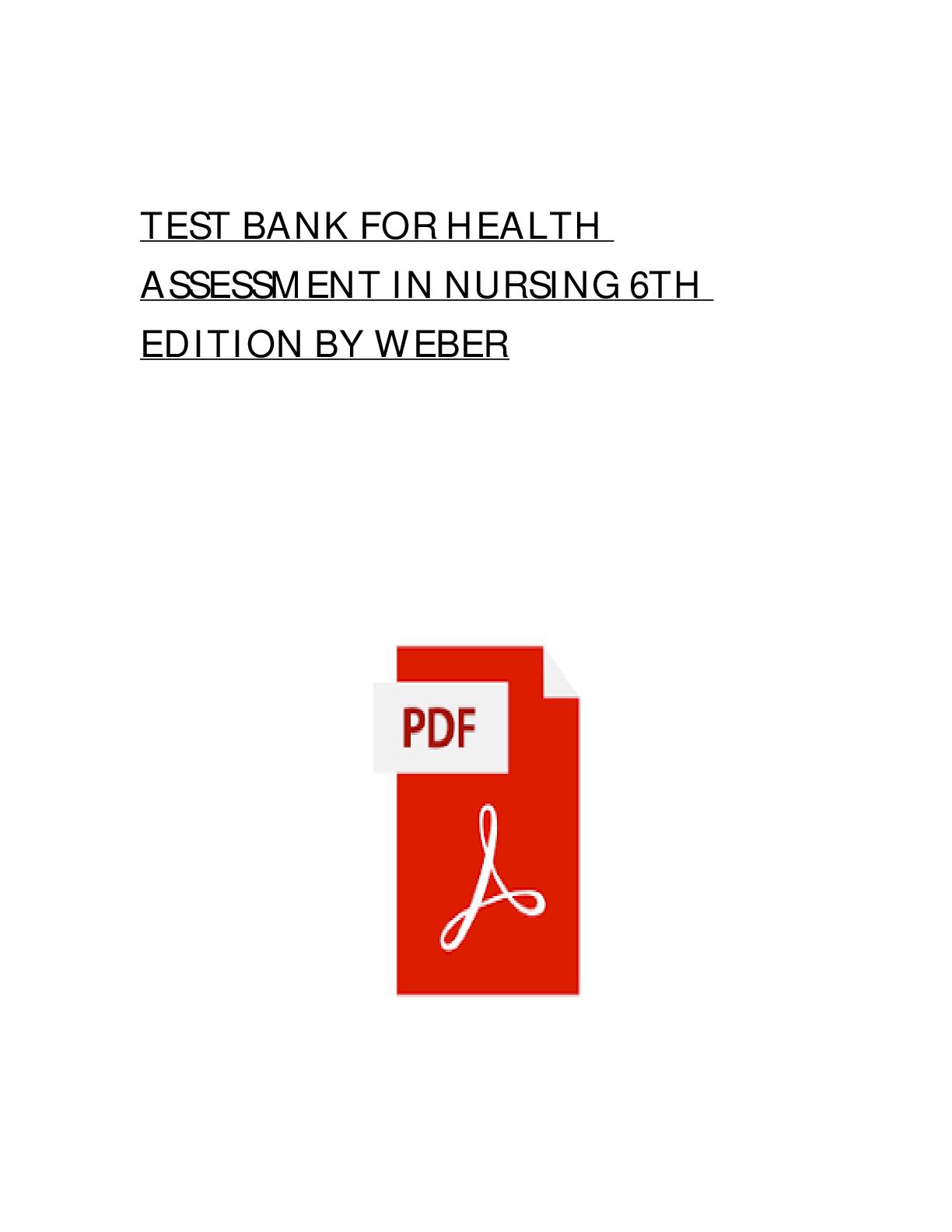
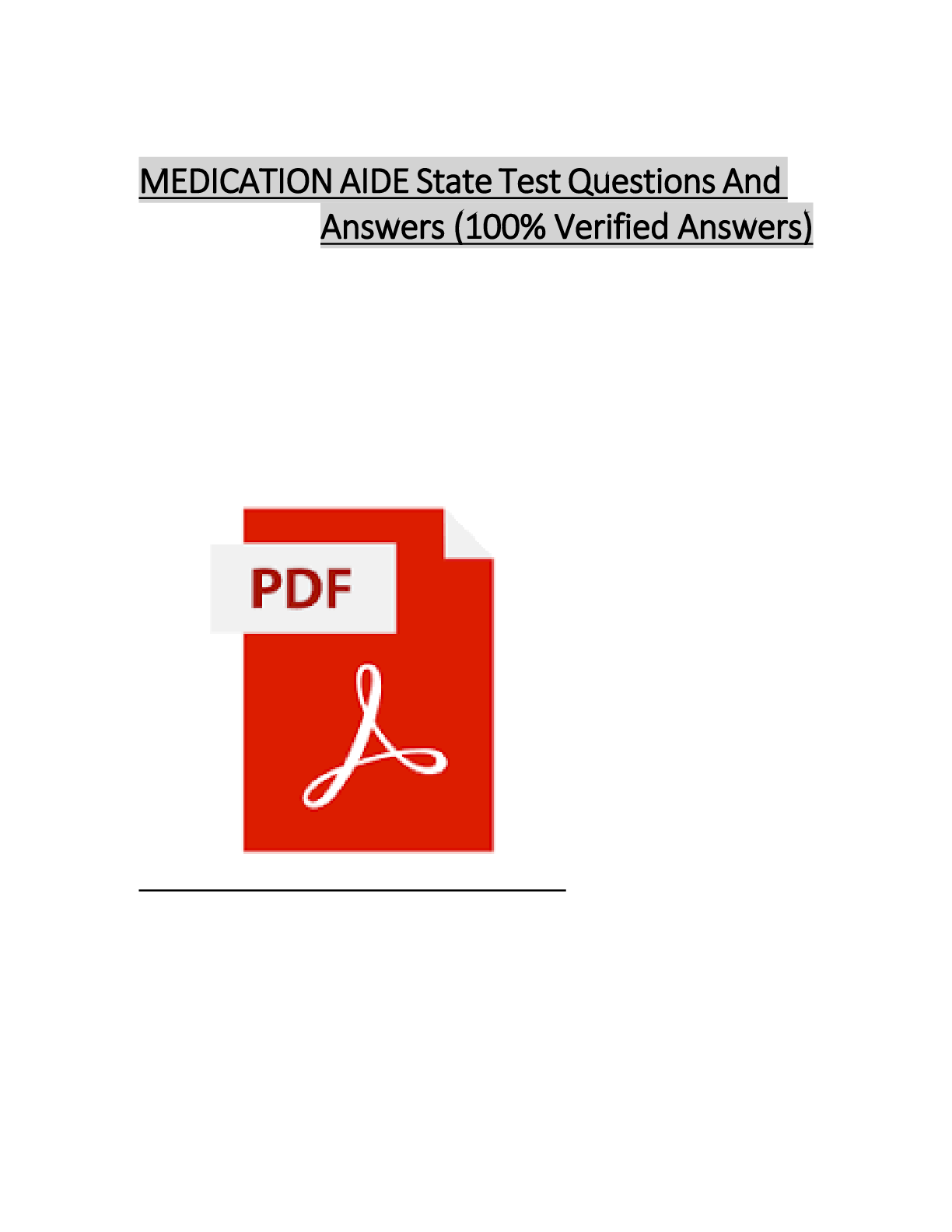
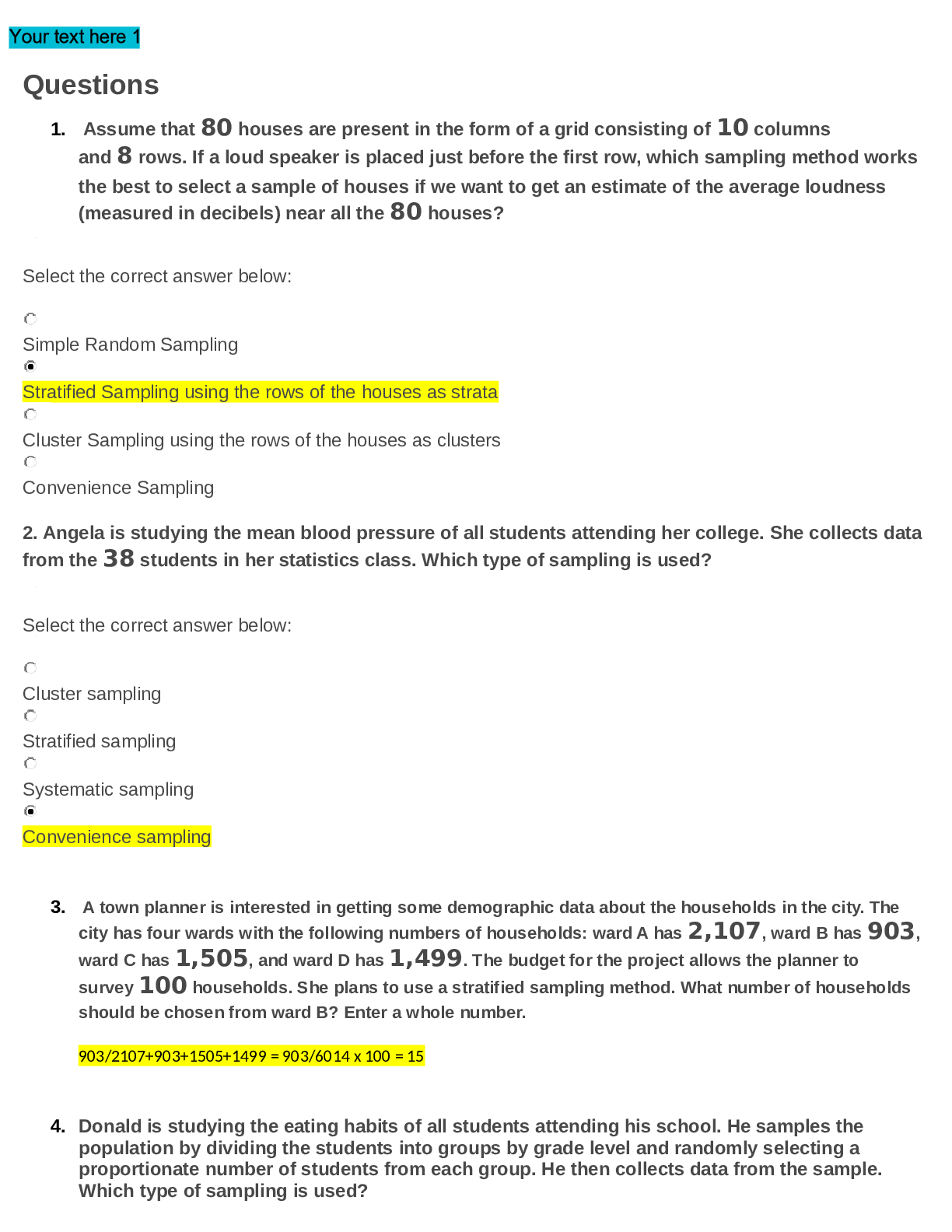




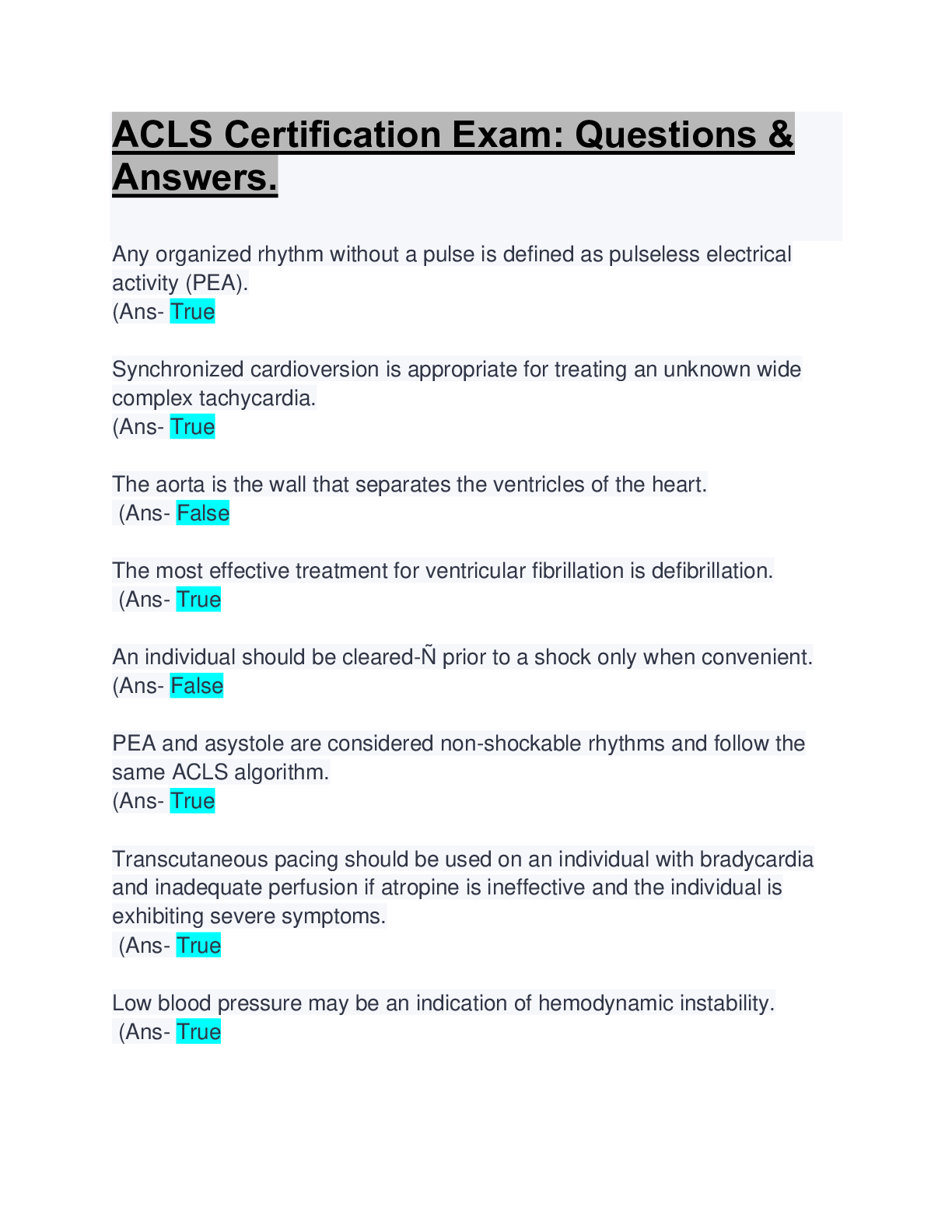



 WITH QUESTIONS AND ANSWERS.png)


